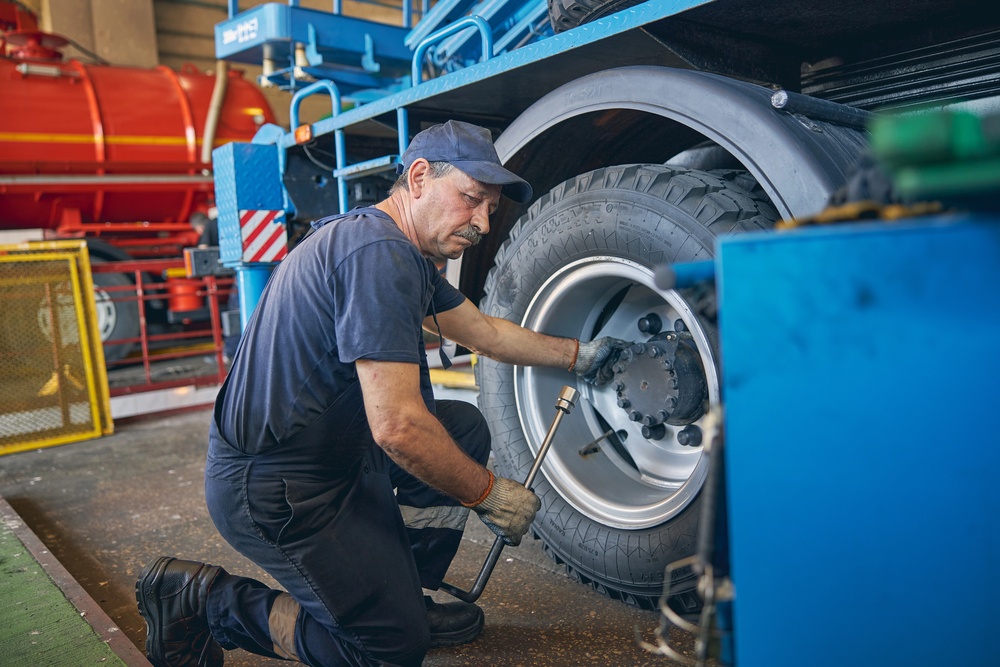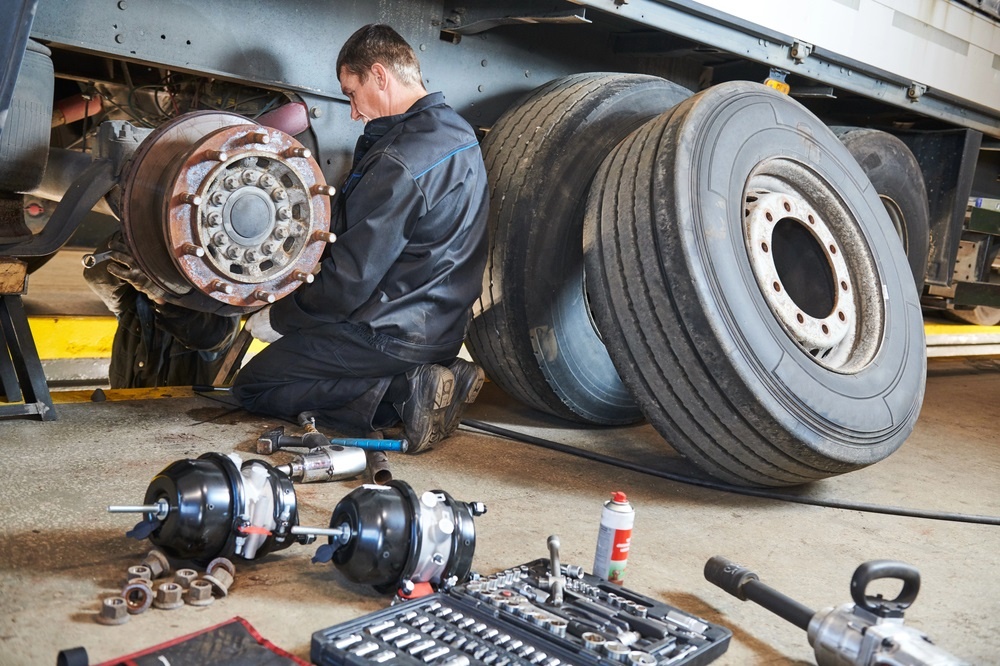The trucking industry never takes a day off. But seasonal challenges in logistics through the summer and winter can make it challenging to keep up with demand. Factors like extreme weather, seasonal traffic, and mechanical
Whether you’re an independent trucker or managing a full fleet, proactive maintenance is the key to meeting seasonal trucking challenges head-on and keeping your business running smoothly 365 days a year.
Below, learn more about how to optimize your fleet for seasonal challenges without missing a beat, courtesy of a New England trucking company.
Winter challenges in logistics
Trucking in the winter can bring some of the toughest challenges you’ll face all year, from unpredictable winter storms to equipment failures. For fleets and drivers, you’ll need to stay vigilant and proactive to stay safe when conditions are at their harshest.
Ice, snow, and reduced visibility
Driving on icy roads or in falling snow is dangerous even for a standard vehicle.
Around 24% of all weather-related crashes happen during winter weather, injuring over 116,000 people and killing 900 annually.
For truckers in snowy conditions, the risks are magnified. 18-wheelers can’t break as easily as smaller vehicles, increasing the risk of skidding or jack-knifing.
Mechanical strain in freezing temps
Extreme cold can put stress on a truck’s mechanical systems. Freezing temperatures can drain batteries and make tire pressure drop faster. Plus, any water or condensation in a truck’s fuel system can freeze over, putting you at risk of a breakdown. And no driver should be stranded in cold weather.
Winter storm delays cause challenges in logistics
Blizzards can bring traffic to a screeching halt, putting your delivery schedule off track. Even minor road hazards, like poor visibility or an icy road, require slower, more cautious driving, which can impact your delivery times.
How to prepare for trucking in the winter
You can’t always avoid getting stuck on a slushy road. But the following preventative maintenance tasks can help you stick to your schedule and ensure your truck runs smoothly all winter long.
Drain air & fuel systems
At the beginning of the season, drain and replace your air dryer cartridges and fuel filters. Draining cleanses any lingering water, which can freeze over when temperatures drop below freezing.


Prep your tires
Cold weather can cause tire pressure to drop, losing around 1 PSI for every 10℉ temperature drop. Make checking the tire pressure a regular part of your pre-trip inspection and inflate as needed. You can also switch to lug treads during the winter season for better traction in icy conditions.
Charge batteries
Test a truck’s battery during pre-trip inspections and charge it if it’s 9 volts or weaker. You can also consider swapping to a battery with thermal insulation to ward off cold temperature drainage.
Add anti-gel to diesel
To ward off diesel gelling, add an anti-gel product, like Howes Diesel Treat or Lucas Oil, to your fuel tank any time the weather dips below freezing. Follow the instructions on the package and your vehicle’s operator’s manual for best results.
Summer challenges in logistics
Summer trucking may seem like smooth sailing compared to highways piled with snow and ice. But extreme heat can be just as dangerous as extreme cold, and present a unique set of challenges for truckers and operators.
Heat stress on trucks and drivers
Hot weather can strain nearly every system in your truck. For example, summer heat accelerates the chemical reactions inside a battery, draining moisture faster and lowering its lifespan. Heat can also add pressure to your tires, putting them at risk of cracking or even tread blowouts, cause your truck’s fluids to evaporate faster, and potentially overheat the engine.
Driver strain
Drivers need special considerations in hot weather, too. It’s imperative that trucks have adequate working air conditioning, especially during heat strokes. Driving a truck without truck air conditioning can increase the risks of dehydration or heat stroke, which is dangerous for everyone on the road.
Heat-Sensitive freight
Trucks transporting perishables, electronics, or pharmaceuticals face even more pressure in summer. Non-temperature-controlled dry trailers can reach temps of 140 degrees or more. Unless you can upgrade to a temperature-controlled or refrigerated trailer, it’s imperative that heat-sensitive freight spend as little time on the road as possible.
Summer traffic
With teens out of school and families hitting the road for summer vacation, summer has some of the heaviest interstate traffic of any time of year. That influx of vehicles doesn’t just translate into traffic jams – it can also increase the risk of crashes. According to data from the National Safety Council, death rates in car crashes are highest from May through October.
How to prepare for trucking in the summer
Luckily, you can prepare for almost all summer trucking challenges through proactive planning and maintenance on your fleet. Taking action before summer is in full swing can save time, stress, and money.
Check the AC
Before summer is in full swing, flush the truck’s cooling system and replace the coolant. Test the AC before heading on the road to ensure it will keep the whole cab cool and comfortable for long trips.
Build a heat survival kit
In the event that a truck’s AC does go out, drivers can benefit from packing a hot-weather “survival kit” with essentials like bottled water and battery-powered fans. These essentials can also come in handy in the case of mechanical failure – you don’t want to be caught on the roadside unprepared.
Ventilate the trailer
For dry weight trailers, loading heat-sensitive freight away from the walls can promote air flow, as can using inflatable air chutes along the trailer’s ceiling. Of course, for longer trips or extreme environments, it may be worth investing in temperature-controlled trailers to prevent spoilage.
Plot the fastest route to mitigate challenges in logistics
To keep both drivers and freight on the road as little as possible, take full advantage of new AI-powered routing tools to find the most efficient routes. Many of these tools track additional data, like weather changes and seasonal traffic patterns, which helps you make it to your destination faster.
Conclusion: Seasonal Challenges in Logistics
Seasonal extremes can create trucking challenges that ripple throughout your whole supply chain. By taking a proactive approach in the summer and winter, you can prepare to meet the season head-on and keep your fleet operating costs down.
Prefer to outsource? Let N&D Transportation do the job! At our Rhode Island distribution center, our fleet is well-prepared to meet both brutal winters and sweltering summers, keeping your deliveries on schedule with competitive rates. Contact us today to see how we can help you meet your productivity goals!



